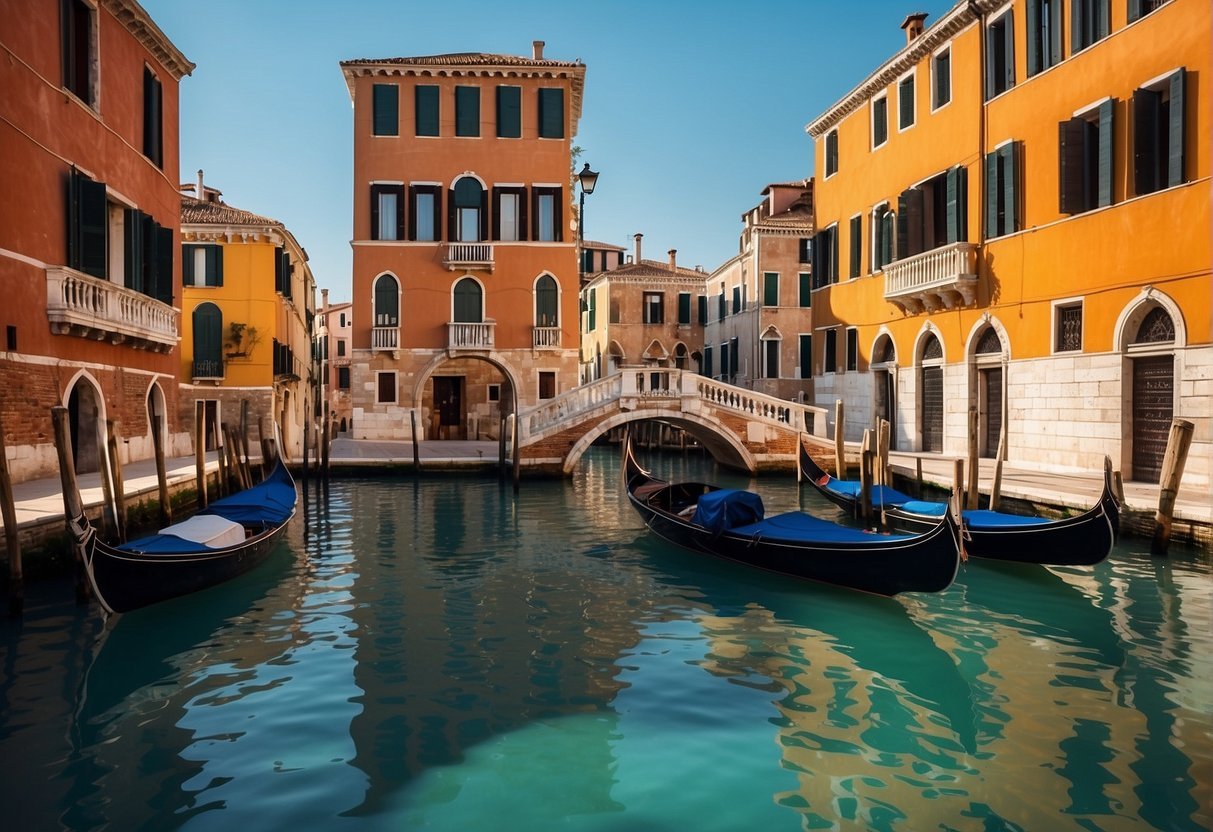Venetian Palazzos: The Architectural Muse Behind Wes Anderson's Phoenician Design

Table of Contents
The Architectural DNA of Venetian Palazzos
Venetian palazzo architecture is a rich tapestry woven from centuries of artistic and cultural influences. Understanding its defining characteristics is key to appreciating its impact on Wes Anderson's work. The palazzos, often built along the iconic Canal Grande, represent a confluence of architectural styles:
- Historical Periods: Venetian palazzo architecture evolved through various periods, absorbing influences from Gothic, Renaissance, and Baroque styles. This blending of eras is reflected in the diverse architectural features found on these magnificent buildings.
- Symmetry and Balance: A hallmark of Venetian palazzo design is the emphasis on symmetry and balance. Facades are meticulously arranged, often featuring identical or mirrored elements on either side of a central axis. This creates a sense of harmony and visual order.
- Rich Materials: The palazzos showcase the lavish use of materials. Marble, stucco, and brick were employed to create opulent exteriors, often adorned with intricate carvings and detailing. The colors, though often weathered over time, still contribute to the overall aesthetic appeal.
- Intricate Detailing and Ornamentation: From elaborate window frames and cornices to decorative moldings and sculptures, Venetian palazzos are brimming with ornate detailing. This meticulous craftsmanship adds depth and visual richness to the facades.
- The Influence of the Grand Canal: The Grand Canal's presence profoundly impacted palazzo design. Many palazzos were designed to maximize their waterfront views, resulting in striking architectural features such as water-level entrances and expansive windows overlooking the canal.
Wes Anderson's Signature Style and its Echoes of Venetian Grandeur
Wes Anderson's distinct filmmaking style shares remarkable parallels with the architectural features of Venetian palazzos. His meticulously planned shots, vibrant yet often muted color palettes, and focus on exquisite details all resonate with the elegance and precision of Venetian architecture:
- Symmetry in Film: Anderson consistently employs symmetrical compositions in his shots, mirroring the balanced facades of Venetian palazzos. Characters are often positioned symmetrically within the frame, creating a sense of visual harmony.
- Color Palettes in Film: Anderson often favors pastel color palettes, reminiscent of the faded stucco and weathered marble often found on Venetian buildings. These muted yet vibrant colors contribute to the films' distinctive visual identity.
- Meticulous Set Design: The attention to detail in Anderson's set designs is unparalleled. Every prop, every piece of furniture, every background element is carefully chosen and placed, mirroring the intricate detailing of Venetian palazzo exteriors and interiors.
- Examples from his Films: The influence is particularly striking in The Grand Budapest Hotel, with its symmetrical structure, pastel palette, and rich detailing echoing the elegance of a Venetian palazzo. Similar elements can be found in films like Fantastic Mr. Fox and Moonrise Kingdom, though perhaps with a more whimsical interpretation.
Specific Examples: Tracing the Venetian Influence in Wes Anderson's Filmography
Let's delve deeper into specific examples to illustrate the Venetian influence. The Grand Budapest Hotel stands out as a prime example. The hotel itself, with its symmetrical design and pastel-colored facade, strongly resembles a grand Venetian palazzo. The internal shots, with their meticulous detailing and symmetrical arrangements of furniture and props, further reinforce this connection. The use of specific colors, like the faded pinks and greens, directly relates to the aged stucco and marble commonly found in Venetian buildings. This isn't simply a stylistic choice; it’s a deliberate evocation of a specific architectural tradition. By analyzing the careful arrangement of elements within scenes, one can draw a direct line between the visual storytelling and the architectural inspiration.
The Grand Budapest Hotel as a Case Study
The Grand Budapest Hotel serves as a perfect case study. The hotel's façade, with its symmetrical wings and pastel colors, is a direct homage to Venetian palazzo architecture. Even the internal spaces, with their carefully arranged furniture and meticulously chosen props, reflect the ornate detailing and balanced composition characteristic of Venetian palaces. The film's color palette, a rich tapestry of muted pinks, greens, and creams, evokes the aged stucco and weathered marble commonly found on these buildings. The film’s overall aesthetic is a visual translation of Venetian architectural principles into a cinematic language.
Conclusion
The connection between the architectural marvels of Venetian palazzos and the distinctive visual language of Wes Anderson's films is undeniable. His masterful use of symmetry, color, and detail creates a cinematic experience that subtly, yet powerfully, evokes the grandeur and elegance of Venetian architecture. From the pastel hues mirroring weathered stucco to the meticulously arranged sets echoing the balanced facades of palazzos, Anderson's work reveals a deep appreciation for and understanding of this architectural legacy.
Delve deeper into the world of Venetian palazzos and discover the rich history and architectural brilliance that continues to inspire filmmakers like Wes Anderson. Explore books, websites, and documentaries about Venetian architecture and Wes Anderson's filmmaking process to further appreciate the intricate details and profound inspiration behind his cinematic masterpieces. The beauty and precision of Venetian palazzos continue to resonate in the captivating visuals of his films, leaving a lasting impression on viewers worldwide.

Featured Posts
-
 European Car Market Slowdown Economic Uncertainty Dampens Sales
May 28, 2025
European Car Market Slowdown Economic Uncertainty Dampens Sales
May 28, 2025 -
 Is Tyrese Haliburton Playing Tonight Pacers Nets Injury Report
May 28, 2025
Is Tyrese Haliburton Playing Tonight Pacers Nets Injury Report
May 28, 2025 -
 Ayndhwfn Btla Lldwry Alhwlndy Ttwyj Msthq
May 28, 2025
Ayndhwfn Btla Lldwry Alhwlndy Ttwyj Msthq
May 28, 2025 -
 Cities Under Siege The Impact Of Dangerous Climate Whiplash
May 28, 2025
Cities Under Siege The Impact Of Dangerous Climate Whiplash
May 28, 2025 -
 Arraez Vs Carpenter Phillies Vs Mets Opening Day Showdown
May 28, 2025
Arraez Vs Carpenter Phillies Vs Mets Opening Day Showdown
May 28, 2025
